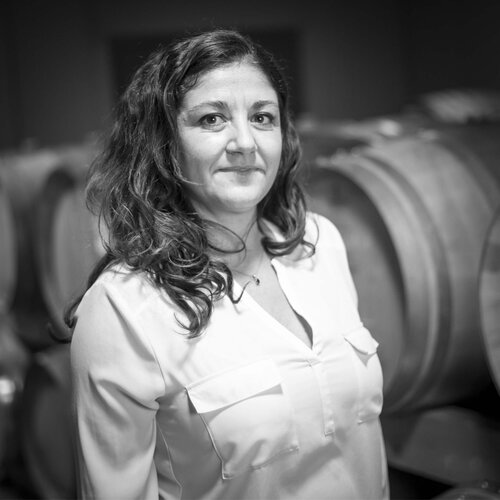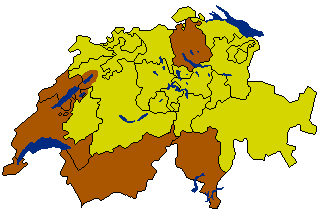
When we think of malbec, it is often the Argentinian version, but the popular wine actually originated in France. Roman invaders planted vineyards as they developed infrastructure in Southwestern France. They left, but the grapes remained, and by the 16th century evidence of malbec, under the name Auxerrois, was recorded. Malbec has seen ups and downs since those early recordings, but winemakers in its birthplace are bringing the French wine back to the table.
History in France
Early on malbec suffered from something of an identity crisis. Local growers in France would name the wine after their localities resulting in a variety of monikers like Auxerrois, Pressac, and Plant du Lot. It was also known as the “Black Wine of Cahors,” famously enjoyed by Eleanor of Aquitaine who allegedly served it at her parties, and her wedding to Henry Plantagenet, the future King of England, in 1152. The confusion in names still exists. It has been called malbec since Monsieur Malbeck planted it in Bordeaux in the 1780s, but winemakers today still refer to it as ‘cor,’ or ‘cot’ which is probably a nod to the region that birthed it, Cahors.
The identity crisis was not malbec’s only challenge. Cahors was the primary producer of malbec wine in the Middle Ages, but it was then shipped to Bordeaux to sell. Bordeaux dominated the wine trade in the 1300s, and British demand for wine was huge. The complication came with Bordeaux capitalizing on their economic advantage—they wanted to sell Bordeaux wines before any other region’s products. Wines from Cahors were low priority for Bordeaux tradespeople as they depleted their own local winemakers’ stock first. Wines from Cahors became lower-priced, less attractive bottles in the grab for the British market, and eventually malbec suffered as less and less of the grape was planted.
The lower demand coupled with the temperamental nature of the grape all but erased malbec from the French wine map. The grape thrives in warm climates, and the wet, cold weather dominating French wine regions made it an undesirable choice for winemakers. Then came the phylloxera outbreak in Bordeaux. When it came time to replant, most growers selected hardier varieties, leaving malbec out of their repertoire.
The frosts in Bordeaux in 1956 cemented malbec as a risky grape. But Cahors persevered, continuing to grow malbec.

Move to Argentina
Malbec found new fans in the 1850s when French botanist Michel Pouget brought malbec vine cuttings to South America. Governor Sarmiento of Argentina ushered in a renaissance for the shunned grape on April 17, 1853 when he founded the research center to study international grape varieties that would propagate well in the Argentinian climate. This date now serves as the anniversary malbec was introduced to Argentina and has been designated Malbec Day.
The inky, thin-skinned grape took off in Mendoza, and started the worldwide love affair with Argentinian malbec. The drier climate, and abundant sunshine combined with cool nights allowed malbec growers to tap into the grapes’ full potential. Argentinian malbecs tend to be produced with 100 percent malbec grapes, and are known for their fruit-forward, approachable style. Today Argentina dominates the malbec market with over 100,000 acres planted across the country.
Winemaker Florencia Stoppini got her start making malbec in Argentina. She grew up in vineyards with her grandfather and father, and by the 1990s, was making her own wine. “I made my first malbec in Argentina in 1997 and I [made] wine there until 2001, in Mendoza, in a vineyard called the Valle de UCO area . Then I had a short experience with malbec in Australia for the 2006 harvest…Finally in 2016 I had [the opportunity] to put all my experience and my knowledge to make the great malbec here in Languedoc, where all [the] best climatic conditions are.”

Now she is at Le Wines in Languedoc in Southern France. The Le Malbec starts in the chalk and clay-based soils of the Minervois region. It is 100% malbec, aged 80% in stainless steel and 20% old French oak barrels. The warm western Languedoc brings out tastes of deep blackberry and tart plum. Stoppini has clearly brought her zesty Argentinian style to the venerable French grape, as well as a bit of luck, “I remember my first harvest in 1997. I was tasting the tanks in the cellar during fermentation but my glass broke on me. The t-shirt I was wearing was white, and this malbec wine was so black. You can imagine the situation… I kept that t-shirt stained with malbec for a long time, for many harvests, and today I still keep it as a lucky object for every harvest.”

Resurgence In France
Though Argentina is a nexus for malbec today, there is something special happening back in its birthplace, France. Winemaker Arnaud Bladinières is following his family’s legacy of viticulture at Mas des étoiles in the heart of Cahors. Bladinieres returned to work at his father’s estate Château Bladinières in Cahors in 2005 and opened Mas des Etoiles in 2007 with childhood friend David Liorit. “I use only malbec grapes even though we are allowed to blend. The goal is to make approachable wine you can drink right away.” And his malbec is just that. The Cahors Petite Etoile comes from 30-year-old malbec vines grown in silica and clay soil, and it is 100% malbec. It spends 18 months in stainless steel tanks. The Cahors wine is approachable like an Argentinian but has a more complex profile with tinges of earthiness and dark fruit.

In 1971, Cahors and malbec were tossed a lifeline when it garnered the Appellation d’Origine (AOC) classification. All AOC Cahors wines must have at least 70% malbec grapes. They can be blended with merlot or tannat, but many Cahors winemakers are moving to 100% malbec. “When first started in viticulture or making wine, malbec in France had a bad rep. I took on the goal to put it back in the forefront, to help people love malbec again. I enjoyed the challenge. I also have a passion for the wide range of profiles you can have with that grape. You can grow from the very light, flowery rosé, to a very deep, dark inky, red wine, and everything in between,” Bladinières said.

This move to 100% malbec is helping the little French grape that could on two fronts—the increasing warming of the climate, and the tendency to drink wines young, some on the day of purchase. Bladinières added, “There’s a lot of complexity that makes it fun to work with, also because people these days drink wine young, no one has to [age] the wine. With malbec you’re gonna get fruit and complexity early on.” And, that trend is supported by Nielsen who reported in 2020 that 58% of consumers drink their wines the same day they purchase them.
Environmental factors are a constant concern for the agricultural industry as a whole, but especially for French winemakers. Malbec was eschewed early in its history because of its lackluster performance in French wine regions which tend to be cooler, and wetter, but the warming trend in Southwestern France has produced much more favorable growing conditions. “The quality of the wine is now superior to 20 years ago in France. One of the reasons Cahors came back is because of global warming. You have a better maturity of the grapes, and therefore you have a higher quality, or more approachable malbec. So, global warming has benefited putting Cahors back on the map because 20 years ago, people in America, for example, didn’t want to drink [French malbec] at all,” Bladinières said.
Whether attributed to the warming climate, or tendency for consumers to drink wine young, French malbec is carving its own niche in the global wine marketplace.
Source:
https://www.alcoholprofessor.com/blog-posts/history-of-malbec-in-france
ABOUT THE AUTHOR
Carrie Honaker
Carrie Honaker is a freelance writer who is not sure where she will land next, but it will involve messy eating, a spicy Tempranillo and finding the local dive bar. Her work has been featured in Wine Enthusiast, Bon Appetit, and others.
You can find her on Twitter and Instagram

















